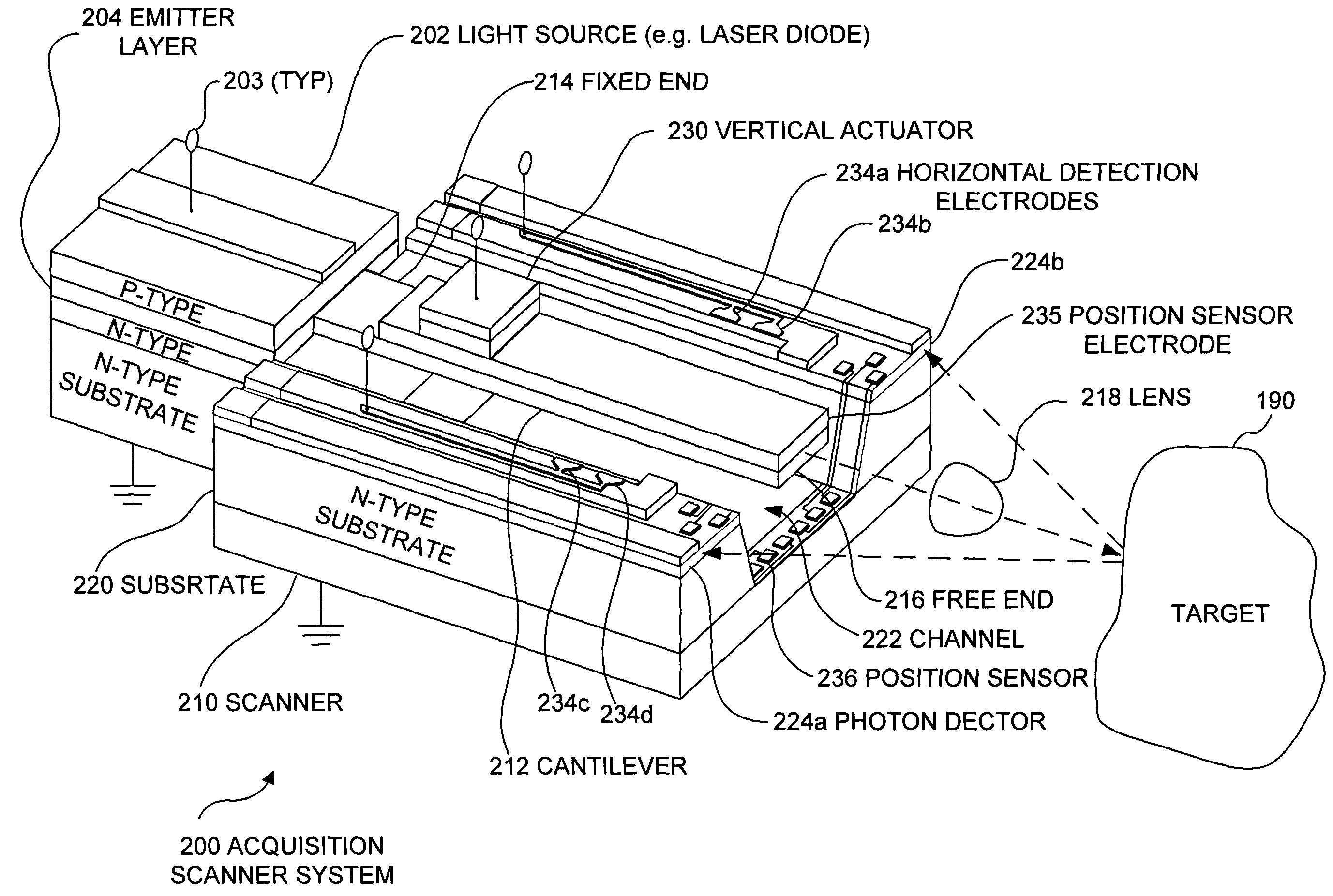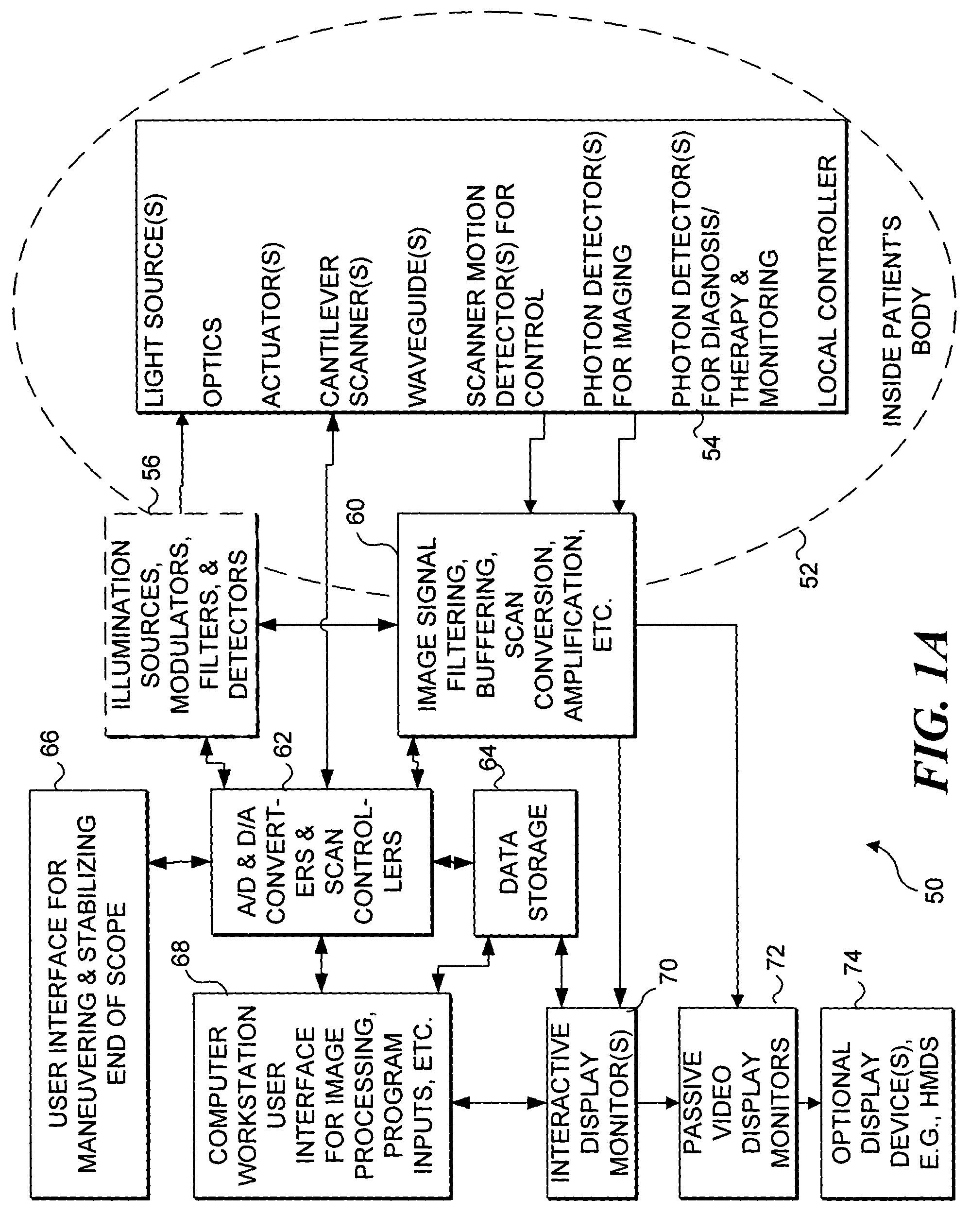Integrated optical scanning image acquisition and display
a technology of optical scanning and image acquisition, applied in the field of microelectromechanical systems, can solve the problems of reducing the resolution and/or field of view of the device, limiting the possibility of pixels, and reducing the system's size using this approach
- Summary
- Abstract
- Description
- Claims
- Application Information
AI Technical Summary
Benefits of technology
Problems solved by technology
Method used
Image
Examples
Embodiment Construction
Example Applications of the Present Invention
[0041]As indicated above, the present application is a continuation-in-part of copending utility patent application Ser. No. 09 / 850,594, filed on May 7, 2001, which is based on prior provisional patent application Ser. No. 60 / 212,411, filed on Jun. 19, 2000, both of which are hereby explicitly incorporated by reference. These applications describe a medical imaging, diagnostic, and therapy device. However, the present invention may be used for acquiring an image, for displaying an image, or for otherwise detecting or delivering light. Nevertheless, for exemplary purposes, the present invention is primarily described with regard to a preferred embodied as a miniature medical device such as an endoscope. Those skilled in the art will recognize that the present invention can also be embodied in a non-medical image acquisition device, a wearable display, a biological, chemical or mechanical sensor, or any other miniature high resolution, far-...
PUM
 Login to View More
Login to View More Abstract
Description
Claims
Application Information
 Login to View More
Login to View More - R&D
- Intellectual Property
- Life Sciences
- Materials
- Tech Scout
- Unparalleled Data Quality
- Higher Quality Content
- 60% Fewer Hallucinations
Browse by: Latest US Patents, China's latest patents, Technical Efficacy Thesaurus, Application Domain, Technology Topic, Popular Technical Reports.
© 2025 PatSnap. All rights reserved.Legal|Privacy policy|Modern Slavery Act Transparency Statement|Sitemap|About US| Contact US: help@patsnap.com



